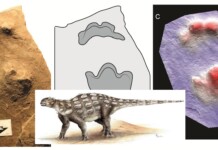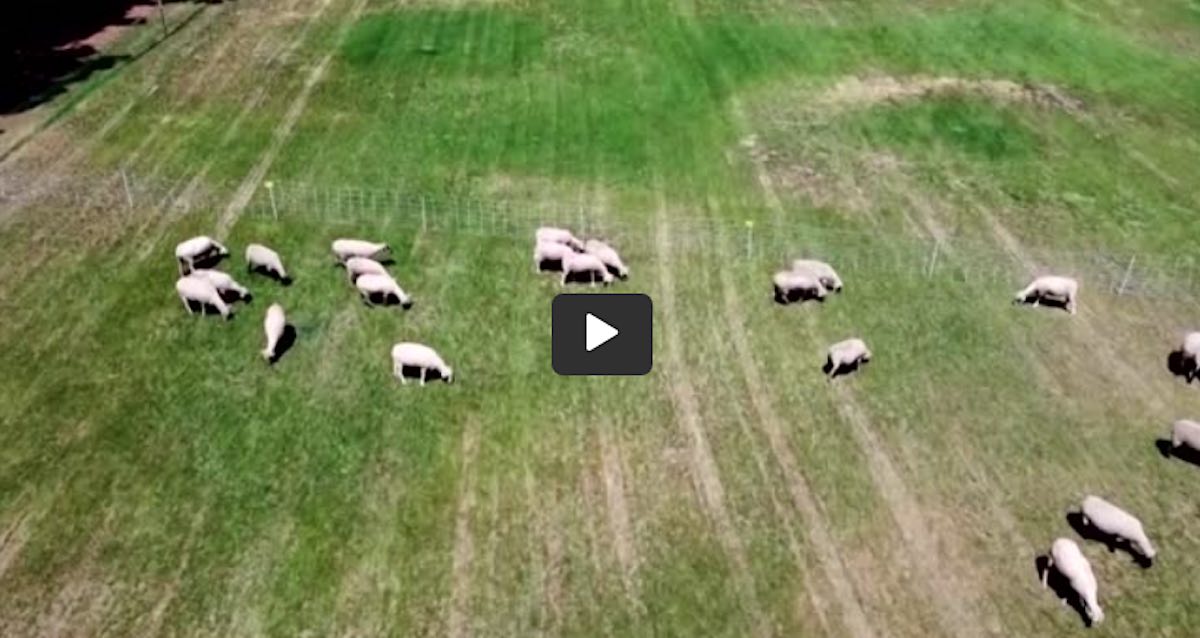Sheep were grazing the University of California–Davis campus this week in an academic experiment to see if the ewes can eat weeds and grass, fertilize, and control pests, as well as—or better than—using conventional landscaping methods.
The woolly ewes are part of a multidisciplinary study to explore the possibilities of saving the campus money and resources at the same time.
“My interest is taking the science on green infrastructure and sustainability and designing it so it’s interactive, beautiful and practical,” said A. Haven Kiers, assistant professor of landscape architecture in the College of Agricultural and Environmental Sciences, who is leading the project.
Kiers has hired student sheepherders to watch over the sheep’s three-day stay on the grassy area along Old Davis Road, adjacent to the UC Davis Arboretum.
WATCH: World’s Oldest-Known Wild Bird—Named Wisdom—Hatches Another Chick at 70
Kiers is a longtime proponent of green infrastructure such as green roofs you can grow plants on, and urban landscapes that are aesthetically pleasing as well as ecologically productive. The grazing sheep pilot project is a natural outgrowth of that research.
She said she is bringing to the campus her concept of Nature HEALS (for health, engagement, aesthetics, landscapes and sustainability) to emulate a historical practice throughout France—and even at the White House and in Central Park—and bring a pastoral setting to UC Davis, and hopefully spawn that idea for other campuses and municipalities at a grander scale.
The sheep put in a full day’s work from Wednesday to Friday this week, snacking from 8 a.m. to 5 p.m. For the control, the adjacent traditionally-landscaped acre of grassland was maintained by campus in the usual way. The grass height and condition will be assessed on each site before and after grazing.
LOOK: Watch the Thundering Return of Bighorn Sheep to Nevada Land They Haven’t Roamed for 100 Years
There are four breeds of sheep, that are all being used for their wool, taking part in the study: Suffolk, Hampshire, Southdown and Dorset, said Matthew Hayes, who manages the sheep for UC Davis.
No worries about cleanup, either. “It (the manure) only stays for 10 days, and it actually attracts insects that are beneficial for the landscape.”
Watch a Reuters video on the project…
In a proposal she presented to campus, Kiers said, “Sheep can eliminate invasive plants and restore native grasses, reduce carbon emissions, introduce beneficial insects attracted to their waste products, and improve soil health without compacting the soil. Culturally, the addition of sheep to a green space can add pastoral beauty to a site, provide a sense of place, inspire urban agritourism, serve as a living educational tool, and promote mental health.”
RELATED: 220 Sheep Saved From Australian Bushfires After Heroic Pup Herds Them to Safety
There is however, little peer-reviewed evidence to support those claims as they apply to urban lawn landscapes, she added. Kiers aims to change that with her research, which will continue intermittently throughout the summer—and she hopes to spread the idea to other parts of campus—and the world—in the future.
SHARE This Story to Graze on Your Social Media Pages…





















Yes I like her natural thinking – if the sheep are allowed “to be” (and not manipulated by man’s influence).
I often saw livestock in Vietnamese parks. Farmers just tethered them in the grass. They were also very friendly!